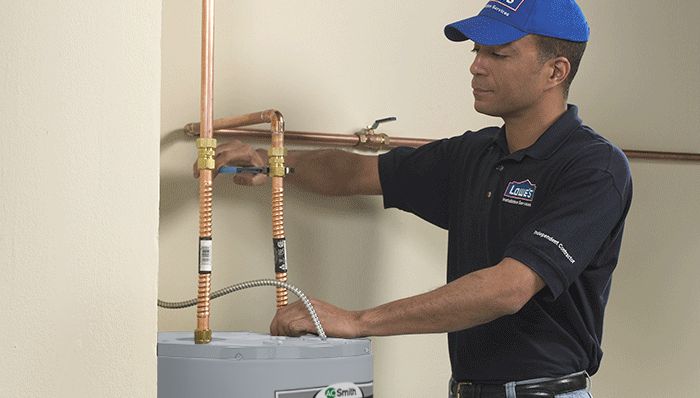Step-by-Step Steps to Caring for Your Home's Hot Water SystemHow to Maintain Your Home's Hot Water System in Good ConditionEffective Techniques for Maintaining Your Home's Hot Water System
Step-by-Step Steps to Caring for Your Home's Hot Water SystemHow to Maintain Your Home's Hot Water System in Good ConditionEffective Techniques for Maintaining Your Home's Hot Water System
Blog Article
Were you in search of insight on Tips For Maintaining Your Hot Water Heater?
Warm water is crucial for daily convenience, whether it's for a revitalizing shower or washing dishes. To ensure your warm water system runs efficiently and lasts much longer, normal upkeep is essential. This article provides useful suggestions and understandings on how to keep your home's warm water system to prevent interruptions and expensive fixings.
Intro
Maintaining your home's hot water system may seem complicated, yet with a few easy steps, you can guarantee it runs efficiently for several years ahead. This overview covers everything from understanding your hot water system to DIY maintenance tips and knowing when to hire expert assistance.
Value of Preserving Your Hot Water System
Routine maintenance not only prolongs the lifespan of your hot water system but also ensures it operates successfully. Disregarding upkeep can cause reduced effectiveness, higher energy bills, and also premature failure of the system.
Signs Your Hot Water System Demands Upkeep
Recognizing when your warm water system needs attention can prevent significant concerns. Watch out for indicators such as inconsistent water temperature level, weird sounds from the heating unit, or rusty water.
Flushing the Water Heater
Flushing your hot water heater gets rid of sediment build-up, enhancing effectiveness and prolonging its life.
Monitoring and Replacing Anode Rods
Anode rods prevent deterioration inside the storage tank. Examining and replacing them when broken is vital.
Complex Concerns Needing Professional Aid
Instances include significant leaks, electric issues, or if your water heater is continually underperforming.
Regular Professional Upkeep Advantages
Professional maintenance can consist of complete evaluations, tune-ups, and ensuring conformity with safety criteria.
Inspecting and Changing Temperature Level Setups
Adjusting the temperature level settings makes sure optimal efficiency and safety.
DIY Tips for Upkeep
You can perform a number of upkeep tasks on your own to keep your warm water system in leading condition.
Checking for Leakages
Frequently evaluate pipes and links for leaks, as these can cause water damage and higher costs.
Understanding Your Warm Water System
Prior to diving into upkeep jobs, it's useful to recognize the basic components of your hot water system. Normally, this includes the water heater itself, pipes, anode rods, and temperature level controls.
Monthly Maintenance Tasks
Normal month-to-month checks can help catch small problems prior to they escalate.
Evaluating Stress Alleviation Valves
Testing the pressure relief valve ensures it works properly and protects against excessive pressure build-up.
Shielding Pipes
Insulating hot water pipes minimizes warmth loss and can conserve energy.
When to Call a Professional
While DIY upkeep is helpful, some concerns call for professional knowledge.
Final thought
Normal upkeep of your home's warm water system is essential for performance, longevity, and cost savings. By following these suggestions and understanding when to seek expert assistance, you can make sure a dependable supply of hot water without unforeseen interruptions.
How to Maintain an Instant Hot Water Heater
Before tinkering with your hot water heater, make sure that it’s not powered on. You also have to turn off the main circuit breaker and shut off the main gas line to prevent accidents. Also turn off the water valves connected to your unit to prevent water from flowing into and out of the appliance. 2. When you’re done, you have to detach the purge valves’ caps. These look like the letter “T” and are situated on either side of the water valves. Doing so will release any pressure that has accumulated inside the valves while at the same time avoid hot water from shooting out and burning your skin. 3. When the purge valves’ caps are removed, you have to connect your hosing lines to the valves. Your unit should have come with three hoses but if it didn’t, you can purchase these things from any hardware or home repair shops. You can also get them from retail stores that sell water heating systems. Read the user’s manual and follow it to complete this task properly. When the hosing lines are connected, open the purge port’s valves. 4. You should never use harsh chemical cleaners or solutions when cleaning your unit. Make use of white vinegar instead. It should be undiluted and you’ll probably use about 2 gallons. 5. Now flush your water heater. This task should probably take about 40 minutes. We can’t give you specific directions for this because the procedure is carried out depending on the type, model and brand of your heater. With that being said, refer to the user’s manual. 6. When you’re done draining the unit, you have to turn off the purge port valves again. Remove the hosing lines that you earlier installed on each of the water valves. Put the valve caps (purge port) back in their respective places and be very careful so as not to damage the rubber discs that are found inside these caps. 7. Now that everything’s back in place, check your user’s manual again to find out how to reactivate your water heating system. 8. Once it is working, turn one of your hot water faucets on just to let air pass through the heater’s water supply pipes. Leave the tap on until water flows smoothly out of it. https://www.orrplumbing.com/blog/2014/september/how-to-maintain-an-instant-hot-water-heater/

Hopefully you liked our part about What Kind of Maintenance Do Water Heaters Need?. Many thanks for taking a few minutes to browse our posting. If you please take a moment to promote this article if you enjoyed it. Thank you so much for your time spent reading it.
Call Today Report this page